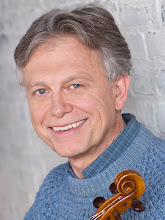 That's yours truly as Old Dame Jane, my wife as the Horse Doctor, daughter as Billy Pud, second daughter as Bold Slasher, making our salutes after our mummers play has ended at a recent holiday party. We sneaked down to the basement mostly unnoticed, donned costumes, then exited the side door to ring our own doorbell. We knew it was working when our dog, Romeo, didn't recognize us and set to barking at us (that's him in lower right).
That's yours truly as Old Dame Jane, my wife as the Horse Doctor, daughter as Billy Pud, second daughter as Bold Slasher, making our salutes after our mummers play has ended at a recent holiday party. We sneaked down to the basement mostly unnoticed, donned costumes, then exited the side door to ring our own doorbell. We knew it was working when our dog, Romeo, didn't recognize us and set to barking at us (that's him in lower right).Wikipedia says these death and resurrection folk plays, dating from medieval Europe are not to be confused with earlier mystery plays, but there seems to be some mystery in them.
What we know about this has come from maybe 25 years of participation, mostly as the visited, but also as players, with the Lowry Hill Players and the Ritual Drama Team, led by Rudd Rayfield. As in Europe a long time ago, mummers in strange costume traipse the streets during the Christmas holiday season, looking for good parties to crash. They start singing when the owner answers their knock on the door, and, in sung verse, they ask to be let in to perform their short play. Afterward, to song and dance, the players pass their purse for replenishment and gladly accept any offers to join the holiday party and table. It is a way to turn social norms up-side-down at least for one evening a year.
As a player, it is a nervy thing to knock on a stranger's door and ask to be admitted, especially in times of fear-mongering. Some homeowners blanch, scowl and shut their doors. Others are caught in the wonder, and slowly trust and come to joy and revelry with the strangers in their midst. Sometimes, guests at the party have the most difficulty, as they see their social status suddenly change right in the moment and they are suddenly made peers with a strange rabble that has been admitted by their host.
After the party one year, a friend who attended and who saw the mummers for the first time, confided in me that he was ready to grab them and haul them back outside. I know my first impulse can be to scream, run or want to fight when I encounter something strange and wild.
Here there is the thrill that comes after having taken such risks, both as players and as the admitting host, and having engaged the play-making that frames both life and that essential part of life – death – and then we recognize ourselves as still being alive and in the presence of good friends, and the smells and tastes of good food and drink. Ahhh!







